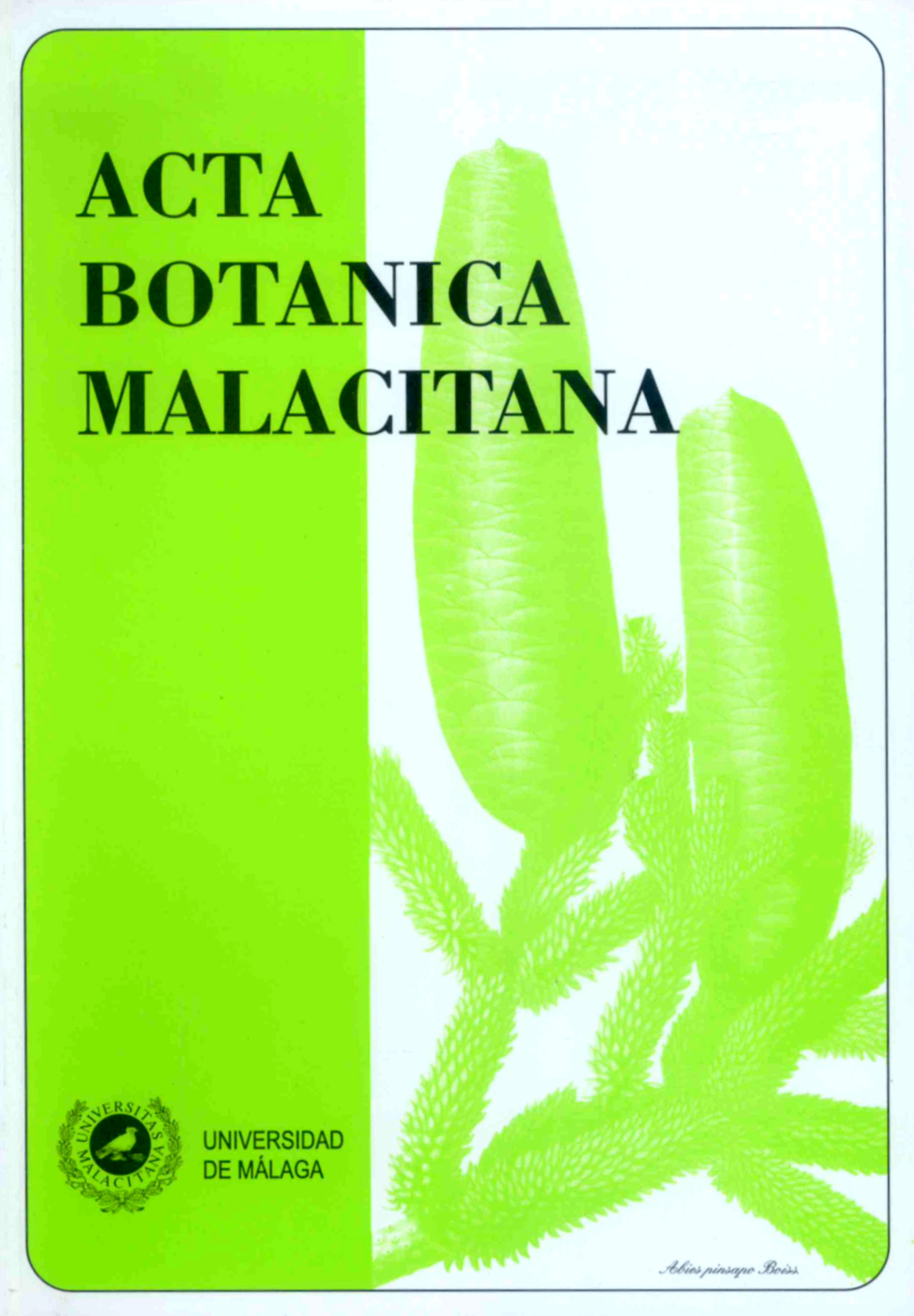Vegetación de la cordillera antequerana oriental (Subsector Torcalense). Málaga-Granada (España)
DOI:
https://doi.org/10.24310/abm.v34i0.6941Abstract
RESUMEN. Vegetación de la cordillera Antequerana Oriental (subsector Torcalense). Málaga-Granada (España). Se ha realizado un estudio fitocenológico, florístico y fitogeográfico del subsector Torcalense en su parte sudoriental (sector Antequerano, provincia Bética, Región Mediterránea), que abarca diversas sierras del Arco Calizo Central de Málaga y que se adentran en Granada (Andalucía, España). Bioclimáticamente aparecen los pisos termomediterráneo subhúmedo, mesomediterráneo subhúmedo-húmedo y supramedite- rráneo húmedo. Se propone una sectorización fitogeográfica a un nivel inferior al de sector, con 2 unidades: unidad Pedrizas (la más occidental), y unidad de Zafarraya (más oriental). Se han seleccionado algunos táxones de interés por su grado de amenaza (ej. Salvia candelabrum), por estar protegidos (ej. Prunus mahaleb) o por ser endemismos torcalenses (Saxifraga biternata) o muy escasos (ej. Narcissus elegans). El territorio presenta una elevada cantidad de sintaxones (49) si tenemos en cuenta su pequeña extensión y homogeneidad litológica. De estos sintaxones destacan algunas novedades como un nuevo tipo de quejigal (Vinco difformis-Quercetum fagineae). Se han catalogado 8 series de vegetación: 4 de tipo climatófilo caracterizadas por vegetación climácica de árboles planifolios, perennifolios o marcescentes (Quercus rotundifolia, Quercus faginea) 1 edafoxerófila con acebuches (Olea sylvestris) y 3 edafohidrófilas con vegetación climácica dominada por árboles caducifolios (Ulmus minor, Fraxinus angustifolia) o arbustos (Nerium oleander) de riberas o niveles freáticos. La vegetación de complejos edafogénicos se desarrolla en karst (Acer monspessulanum) o lagunas (Ranunculus saniculifolius, R. tricophyllus). Se aportan en este trabajo las especies de interés, el esquema sintaxonómico, los inventarios y/o tablas fitosociológicas de novedades o interés especial y un mapa fitogeográfico.
Palabras clave. Vegetación, fitogeografía, sintaxonomía, sector Antequerano, Málaga, Andalucía, España.
ABSTRACT. Vegetation of the eastern Antequera mountain range (Torcalense subsector). Malaga-Granada (Spain). We have studied the vegetation and flora of the south-eastern Torcalense phytogeographical subsector (Antequerano sector, Bética province, Mediterranean region). This area comprises several mountain ranges in the centre of the province of Malaga, entering western Granada province. Three bioclimatic belts have
been detected: thermomediterranean subhumid, mesomediterranean subhumid-humid and supramediter- ranean humid. Two phytogeographical units, under subsector level, are proposed: Pedrizas unit (western) and Zafarraya unit (eastern). Some interesting taxa have been found in the territory; they are endangered (e. g. Salvia candelabrum), protected (e. g. Prunus mahaleb), local endemism (Saxifraga biternata) or scarce plant (e. g. Narcissus elegans). The studied area shows a high number of plant communities (49) if we take into account its little area and homogeneous lithology. We point out some new syntaxa as a Quercus faginea forest (Vinco difformis-Quercetum fagineae). A total of 8 vegetation series have been detected: 4 series are climatophyllous and characterised by sclerophyllous or winter-deciduous broad-leafed trees (Quercus rotundifolia, Quercus faginea); 1 edaphoxerophyllic series is characterised by Olea sylvestris; 3 series are edaphohidrophyllic and characterised by deciduous trees (Ulmus minor, Fraxinus angustifolia) or tall shrubs (Nerium oleander) in riversides and river beds with underground water tables. The vegetation that develops as mosaic-complexes belongs to karst (Acer monspessulanum) or pools (Ranunculus saniculifolius, R. tricophyllus). The more interesting species, a syntaxonomical scheme, relevés and tables, and a phytogeo- graphical map are included.
Key words. Vegetation, Phytogeography, syntaxonomy, Antequerano sector, Malaga, Andalusia, Spain.
Downloads
Metrics
Downloads
Published
How to Cite
Issue
Section
License
All information related to the licensing of published works in Acta Botanica Malacitana and copyright can be found in our Editorial Policy.







1.png)
